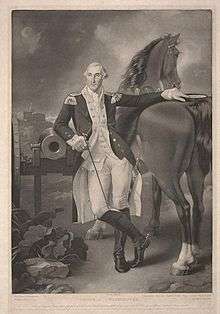Thomas Stothard
Thomas Stothard RA (17 August 1755 – 27 April 1834) was an English painter, illustrator and engraver.

Life and work
Stothard was born in London, the son of a well-to-do innkeeper in Long Acre A delicate child, he was sent at the age of five to a relative in Yorkshire, and attended school at Acomb, and afterwards at Tadcaster and at Ilford, Essex. Showing talent for drawing, he was apprenticed to a draughtsman of patterns for brocaded silks in Spitalfields. In his spare time, he attempted illustrations for the works of his favourite poets. Some of these drawings were praised by Harrison, the editor of the Novelist's Magazine. Stothard's master having died, he resolved to devote himself to art.

In 1778 he became a student of the Royal Academy, of which he was elected associate in 1792 and full academician in 1794. In 1812 he was appointed librarian to the Academy after serving as assistant for two years.[1] Among his earliest book illustrations are plates engraved for Ossian and for Bell's Poets. In 1780, he became a regular contributor to the Novelist's Magazine, for which he produced 148 designs, including his eleven illustrations to The Adventures of Peregrine Pickle (by Tobias Smollett) and his graceful subjects from Clarissa and The History of Sir Charles Grandison (both by Samuel Richardson).
From 1786, Thomas Fielding, a friend of Stothard's and engraver, produced engravings using designs by Stothard, Angelika Kauffmann, and of his own. Arcadian scenes were especially esteemed. Fielding realized these in colour, using copper engraving, and achieved excellent quality. Stothard's designs had an exceptional aesthetic appeal.
He designed plates for pocket-books, tickets for concerts, illustrations to almanacs, and portraits of popular actors. These are popular with collectors for their grace and distinction. His more important works include illustrations for:
- Two sets for Robinson Crusoe, one for the New Magazine and one for Stockdale's edition
- The Pilgrim's Progress (1788)
- Harding's edition of Goldsmith's Vicar of Wakefield (1792)
- The Rape of the Lock (1798)
- The works of Solomon Gessner (1802)
- William Cowper's Poems (1825)
- The Decameron
His figure-subjects in Samuel Rogers's Italy (1830) and Poems (1834) demonstrate that even in old age, his imagination remained fertile and his hand firm.
Art historian Ralph Nicholson Wornum estimated that Stothard's designs number five thousand and, of these, about three thousand were engraved. His oil pictures are usually small. His colouring is often rich and glowing in the style of Rubens, who Stothard admired. The Vintage, perhaps his most important oil painting, is in the National Gallery. He contributed to John Boydell's Shakespeare Gallery, but his best-known painting is the Procession of the Canterbury Pilgrims, in Tate Britain, the engraving from which, begun by Luigi and continued by Niccolo Schiavonetti and finished by James Heath, was immensely popular. The commission for this picture was given to Stothard by Robert Hartley Cromek, and was the cause of a quarrel with his friend William Blake. It was followed by a companion work, the Flitch of Bacon, which was drawn in sepia for the engraver but was never carried out in colour.


In addition to his easel pictures, Stothard decorated the grand staircase of Burghley House, near Stamford in Lincolnshire, with subjects of War, Intemperance, and the Descent of Orpheus in Hell (1799–1803); the library of Colonel Johnes' mansion of Hafod, in North Wales, with a series of scenes from Froissart and Monstrelet painted in imitation of relief[2] (1810); and the cupola of the upper hall of the Advocates' Library, Edinburgh (later occupied by the Signet Library), with Apollo and the Muses, and figures of poets, orators, etc. (1822). He prepared designs for a frieze and other sculptural decorations for Buckingham Palace, which were not executed, owing to the death of George IV. He also designed a shield presented to the Duke of Wellington by the merchants of London, and executed a series of eight etchings from the various subjects that adorned it.[1]
He married Rebecca Watkins in 1783. They had eleven children, six of whom - five sons and one daughter - survived infancy.[3] They lived in Henrietta Street, Covent Garden, until 1794, when they moved to a house at 28 Newman Street, of which Stothard had bought the freehold.[4] His wife died in 1825.[5] His sons included Thomas, accidentally shot dead in about 1801;[6] the antiquarian illustrator Charles Alfred Stothard, who also predeceased his father;[7] and Alfred Joseph Stothard, medallist to George IV.[8]
Notes
References
- Coxhead, Albert Crease (1906), Thomas Stothard, R.A., an Illustrated Monograph, London: A.H. Bullen — Contains a short biographical chapter, and an accurately dated summary of the various books and periodicals illustrated by Stothard.
- Attribution
 This article incorporates text from a publication now in the public domain: Chisholm, Hugh, ed. (1911). "Stothard, Thomas". Encyclopædia Britannica. 25 (11th ed.). Cambridge University Press. p. 970.
This article incorporates text from a publication now in the public domain: Chisholm, Hugh, ed. (1911). "Stothard, Thomas". Encyclopædia Britannica. 25 (11th ed.). Cambridge University Press. p. 970.
Further reading
- Bray, Anna Elizabeth. Life of Thomas Stothard, R. A., with personal reminiscences: Volume 1, Volume 2 (London, J. Murray, 1851).
- Dobson, Austin. Eighteenth Century Vignettes, volume 1 (London: Chatto & Windus, 1892).
 "Stothard, Thomas". Dictionary of National Biography. London: Smith, Elder & Co. 1885–1900.
"Stothard, Thomas". Dictionary of National Biography. London: Smith, Elder & Co. 1885–1900.
External links
| Wikimedia Commons has media related to Thomas Stothard. |
- Thomas Stothard online
- Works by Stothard (Government Art Collection)
- Paintings by Thomas Stothard (Bridgeman Art Library)